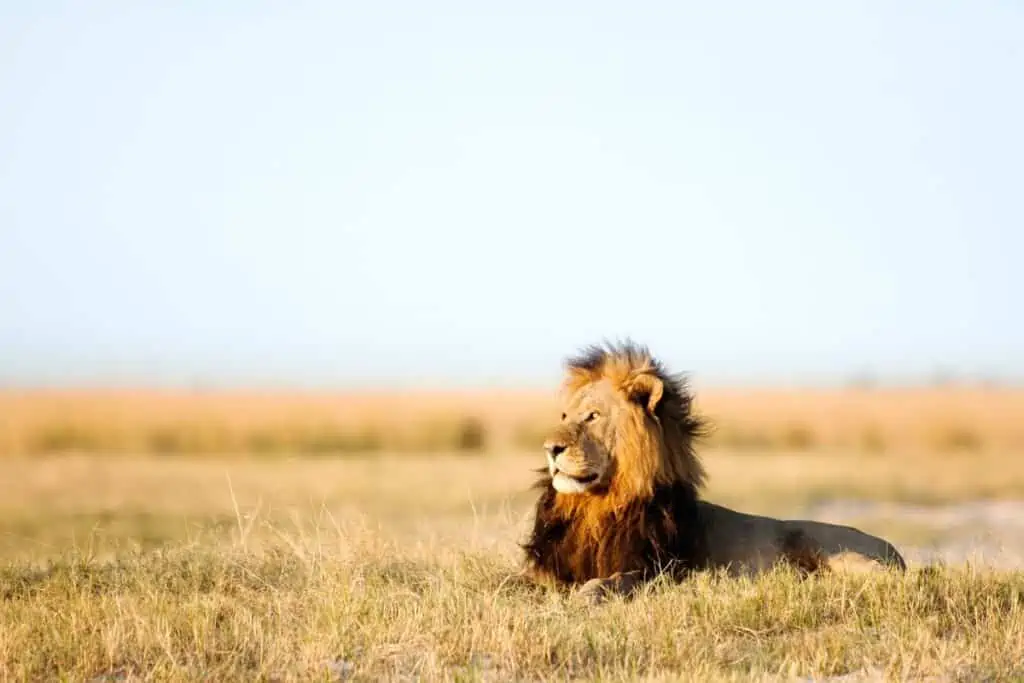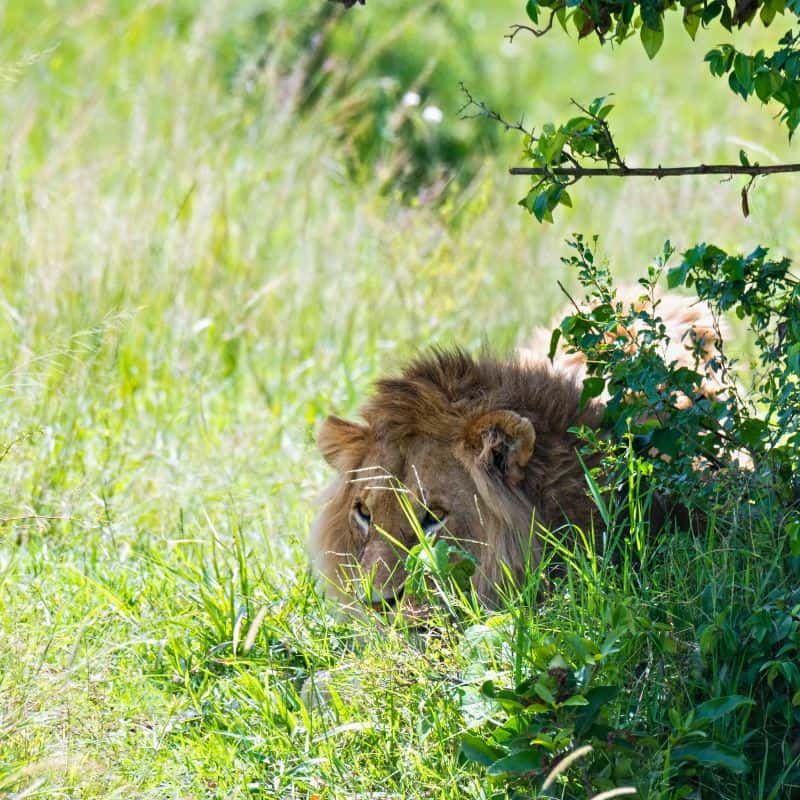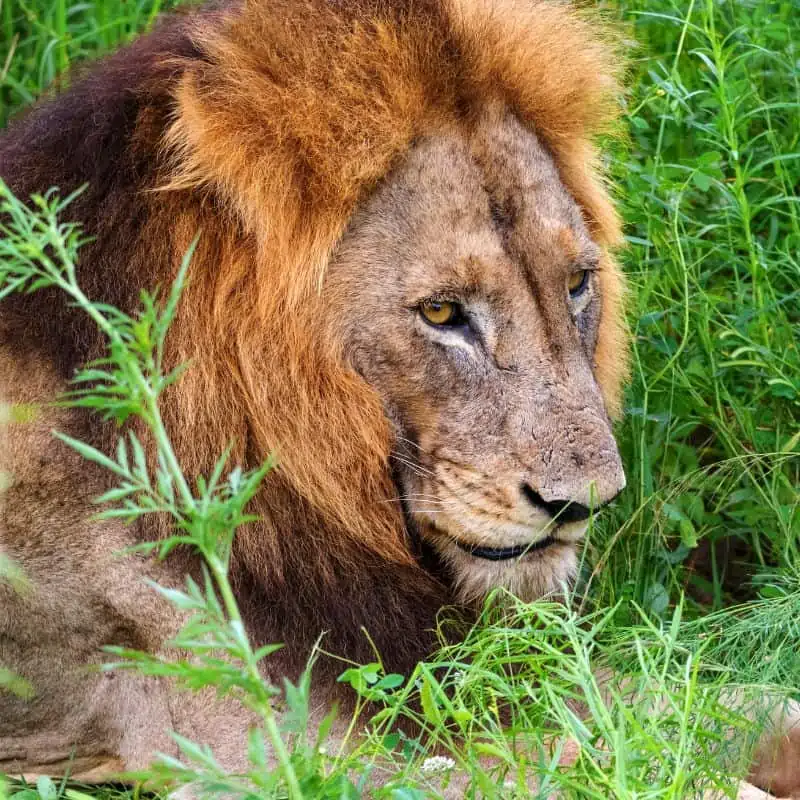Lions are known as the “King of the Jungle,” but surprisingly, they don’t actually call the Jungle home. So, if they don’t live in the jungle, then where do lions live?
Lions prefer open plains and are mostly found in savannah regions. Approximately 80% of lions are found in Africa and are present in East, West, Central, and Southern Africa. The remaining population of lions is spread out through Southwest Asia, The Middle East, and India.
Lions were once commonly found throughout Africa, Southeast Europe, and India but have since disappeared from 94% of their historic range.
If you want to see one in the wild, let’s look at where you can find them.

Common Places Where Lions Live
The two most common places where Lions call home are:
1. Sub-Saharan Africa
Around 100 years ago, approximately 200,000 lions were living in Africa. As of today, there are only approximately 20,000-30,000. Lions are mainly found in Sub-Saharan Africa.
The Serengeti National Park in Tanzania and Masai Mara National reserve in Kenya are home to most lions in Eastern Africa.
There are approximately 10,000 lions in South Africa, but only 2,300 are in the wild. The rest are in captivity for protection or tourism in places such as Kruger National Park.
Lions in captivity have shown a drastically lower percentage of decline.
Wild lions are also found in various grasslands in Africa.
2. Gir Forest, India
Lions in India are mainly found in Gir Forest National Park. They once were free to roam around these parts of Asia but have been facing a steep decline within the past 100 years.
The Indian government-designed national park has helped increase the population of lions in the area from 523 in 2015 to 674 in 2020.
Only a few hundred Asiatic lions are found in the wild across Asia.
The Habitat of Lions
Contrary to common belief, the “King of the Jungle” does not reside in the Jungle.
Areas such as forests or jungles tend to be too dense for them to thrive in. Most forests also have very hot and humid climate conditions, which aren’t ideal.
Lions that live in the wild are commonly found in grasslands or open woodlands. Such open lands make it easy for them to hunt their prey.
Lions can thrive in areas with enough cover for hiding and hunting. The ideal weather should be on the warmer side but not sweltering.

Types of Lions
The lion is the second largest cat species in the world (only behind the Tiger). There are six types of lions that you can find in the world today.
1. West African Lion
The West African Lion is also known as the Senegal lion and is the smallest among African lions.
Only around 1800 West African lions remain in very small populations scattered around West Africa.
2. Katanga Lion
They are found in Southwestern Africa and are the largest among all lions. They have a lighter-colored mane than other subspecies.
Male Katanga lions weigh 308-533 lb (140-242 kg).
You can find these massive lions in Angola, Namibia, western Zimbabwe, Zambia, DRC, and northern Botswana.
3. Masai Lion
Masai Lion is commonly found in East Africa. They have longer legs than other subspecies of lions and longer manes.
Masai lions that live at an altitude have larger manes than those in lowlands. As the name suggests, these lions call eastern Africa home, particularly the Masai Mara National Park.
4. Transvaal Lion
These lions are also known as Kalahari lions. They are found in South East Africa, and most of their population is in national parks within South Africa.
Male Transvaal lions tend to have black manes.

5. Ethiopian Lion
This lion was considered East African but is no longer found in that area.
There are few left, and all are kept in captivity. They have smaller bodies than other lions due to living in captivity and have darker manes.
6. Asiatic Lion
Also known as the Indian lion, the Asiatic Lion is found only in Gir National Park in Gujrat, India.
Their fur color is muddier, and they are smaller than African lions. These lions are classified as endangered due to their decreasing population.
Threats to Lions
While the plight of the gorilla or the cheetah is well-known, the population of lions is very vulnerable; it’s also rapidly decreasing.
The African lion population has declined by 42% in the last 20 years. If we continue at this rate, they could be extinct by 2050.
Lions, like all animals, are also decreasing due to factors such as climate change and the loss of their habitat for capitalist reasons. However, the leading cause of lions’ death is humans.
They have become prey for human hunters and poachers. Lion bones are used in traditional medicine, and ranchers (farmers) also kill nearby lions out of fear for their livestock.
Due to the habitat loss lions face, they are forced to kill captive livestock for food.
Final Thoughts On Where Lions Live
A lion is one of the most powerful animals in the wild. Once found worldwide, they are now only scattered in some African and Asian areas.
They are most commonly found in Africa and India but are seen in zoos worldwide.
With a rapidly decreasing population, a few years from now, a lion might not be as easy to see as it is today.
FAQs
Where Can You See a Lion?
There are several hundred lions in zoos around the world. If you look up any prominent zoos around you, you will surely find a zoo with lions. Several parks and safaris in Africa allow seeing lions in the wild (or as close to the wild as possible).
Do Lions Live in Groups?
Lions are the only cats that live in groups, known as a “pride.” They are family units that can have up to 40 members. They live, work and raise their cubs together.
Do Lions Have Predators?
The lions’ main predators are humans, who hunt or poach them. A hyena or an adult lion may hunt a cub or weak lion, but lions’ biggest threats are all man made.
